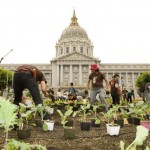The pursuit of "sustainability" is one of the most widely embraced solutions to the gravest concerns of our era—from planetary urbanization, to climate change, to global inequality. To be sure, there are many who remain unconcerned about these issues, or who actively oppose sustainability initiatives. Nonetheless, there is a growing consensus amongst citizens, scientists, scholars, activists, practitioners, and governments, as well as powerful players in business, finance and real estate, that the potential crisis we face is real, and that we must come together as a planet in support of a “sustainable future.” Thus we have seen the call for sustainability grow louder and more ubiquitous—as policy platform and research agenda, as utopian vision and rallying cry, and as business plan and marketing pitch. A plethora of sustainability projects, policies, plans, and campaigns have been advanced in the public and private sector, on a local, regional, and planetary scale.
Beyond the 3 E's
With this ubiquity, we have also seen that “sustainability” can be a difficult concept to pin down. It can mean very different things to different people, and disagreement, debate, and power struggles can emerge over these meanings. Most commonly, sustainability rests on a core idea, first articulated in the United Nations' 1987 Bruntland Commission Report, "Our Common Future," of "meeting today’s needs without compromising the ability of future generations to meet their own needs," and doing so by balancing the “three E’s” of equity, ecology, and economy. Yet efforts to achieve this balance have themselves been, very often, far from balanced. Rather, we have commonly seen how different movements towards the seemingly shared goal of sustainability privilege one or two of these E's over the others, and/or define the E's in quite different ways.
In particular today, we see powerful political and economic actors positioning the “economy” as a if not the priority for major sustainability efforts. Further, this economy is commonly defined in competitive, market-oriented terms. From this perspective, other forms of sustainability emphasizing equity, the environment, and/or alternative economic forms, become 'alternative' or 'non-market' sustainabilities. Very often non-market forms of sustainability can work synergistically with or be incorporated by market-oriented forms. In the tradition of ecological modernism, they can be embraced as “win-win” solutions. Yet insofar they can't, for instance if sustainability goals are deemed irrelevant to or at odds with markets and competitiveness, they can be ignored or become contentious, and may lose out.
To cite just one example explored on our site, we see this in one of the leading forms of urban sustainability planning in the United States today: transit-oriented development [TOD]. Many of these initiatives emphasize market-rate development over affordable housing — much like most contemporary urban development, and despite efforts of advocates to increase low-income targets. From a sustainability perspective, this has had unintended consequences: More affluent residents, who typically drive cars, have moved into expensive green buildings near transit stops in the densely packed urban core. Meanwhile, low-income people, the primary users of public transit, have been displaced to low-rise suburbs, where there are fewer transit options, and they are forced to drive. Thus, paradoxically, TOD now frequently causes an increase in urban sprawl, vehicle miles traveled, and green house gas emissions, while exacerbating social and spatial inequality.
Multiple Sustainabilities
We are living, then, in a time in which multiple sustainabilities circulate, some more powerfully than others, and with often confusing and potentially contradictory effects. On this site, in an effort to begin making sense of this, and drawing on our situated research in California, we propose that there are five main types of sustainability in circulation today. These types are not mutually exclusive. Indeed they frequently operate in tandem and find common cause. But they each emphasize different values and "environments" to be sustained, and grow from distinct epistemological roots, and so are also usefully considered on their own terms. On this website, the different keywords and sites that we examine will be categorized according to one or more of these sustainabilities.
The first, vernacular sustainability, privileges the social and cultural environment, and is associated with traditional and everyday ways of living and working with nature. The second, eco-oriented sustainability, privileges the bio-natural environment, and is associated with environmental sciences, environmentalist movements, and conservation. The third, market-oriented sustainability, privileges the economic environment for capital, and is associated with green industry approaches, technocratic solutions, and often, environmental gentrification. The fourth, justice-oriented sustainability, emphasizes the socio-political environment, and is associated with movements that seek to redress historically based environmental inequalities articulated with race and class disparities, as well as create equitable and diverse approaches to sustainability planning. Finally utopian sustainability is premised upon the collective imagining of an ideal future environment that transcends contemporary conflicts and crises, and has historically been associated with intentional communities, countercultural movements, and science fiction.
Rather than seeing these forms of sustainability simply coexisting with one another, we seek to understand they interact with, compete with, are in conflict with, and/or inspire one another. More detail on the five forms can be found by clicking the links above or in the sidebar; they also serve as a means of navigating the site, connecting associated keywords, sites, and special projects in an attempt to illustrate the multiplicity of their intersections.
Rather than simply advocating one or another of these forms, we seek to contribute to critical conversations around the history behind them and their impacts in the present. It is our hope that this may inform decisions around which form(s) of sustainability to pursue, and why. For while we may welcome growing consensus around the need for sustainability, we must first acknowledge and seek to answer some fundamental questions: What exactly do we mean by term? Who or what is to be included in our ideal sustainable future? And who gets to decide?







